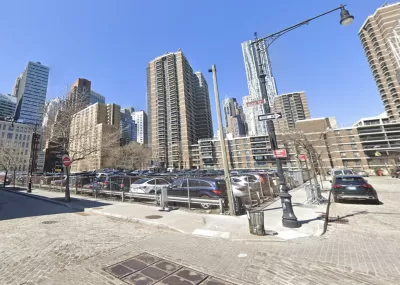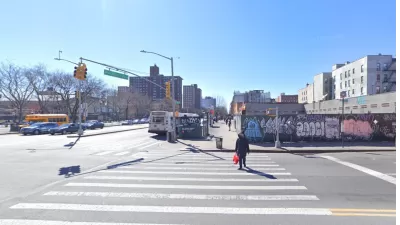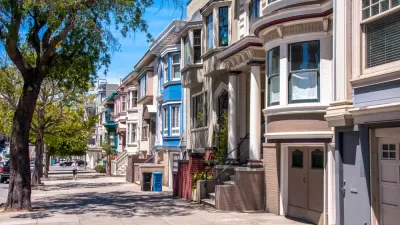A judge ruled against a decision by the Landmarks Preservation Commission to approve a 324-tower in the South Street Seaport Historic District, highlighting the tensions in a city facing a dearth of affordable housing.

A lot currently being used for parking in Manhattan’s South Street Seaport Historic District could be transformed into hundreds of units of housing—that is, if the parking lot wasn’t historically landmarked.
As Ginia Bellafante explains in The New York Times, when a developer proposed a 26-story building for the site at 250 Water Street, preservationist groups voiced their objections and sued, arguing that the building didn’t fit with the character of the historic district, could cause disruptions to a nearby school, and that the Landmarks Preservation Commission acted out of political interest when it approved the plan. “The proposal for the Water Street site includes 270 rental apartments, at least 70 of which would remain affordable, significantly, to those making an average of 40 percent of the area’s median income.” This means dozens of very low-income families “would qualify to live in a new building downtown, close to every conceivable means of public transportation and highly regarded public schools including Peck Slip, across the street.”
The preservationists won.
Bellafante calls this a “a particularly confounding example of the challenge to economically integrate wealthy neighborhoods in New York,” where community groups have obstructed the construction of new housing. With roughly 67,000 people sleeping in New York’s homeless shelters last November, Bellafante wonders, how does the aesthetic cohesiveness and ‘historic character’ of a neighborhood stack up against a desperate need for housing?
FULL STORY: In Affordable Housing v. Parking Lot, a Judge Chooses the Lot

Manufactured Crisis: Losing the Nation’s Largest Source of Unsubsidized Affordable Housing
Manufactured housing communities have long been an affordable housing option for millions of people living in the U.S., but that affordability is disappearing rapidly. How did we get here?

Americans May Be Stuck — But Why?
Americans are moving a lot less than they once did, and that is a problem. While Yoni Applebaum, in his highly-publicized article Stuck, gets the reasons badly wrong, it's still important to ask: why are we moving so much less than before?

Research Shows More Roads = More Driving
A national study shows, once again, that increasing road supply induces additional vehicle travel, particularly over the long run.

How Protecting Kauaʻi’s Forests Safeguards Fresh Water
A University of Hawaiʻi study shows that protecting Kauaʻi’s native forests from invasive species significantly boosts groundwater recharge, making it a cost-effective strategy to secure fresh water and enhance climate resilience.

Gary, Indiana to Expand Transit Service, Bike Share
The city plans to launch a bike share system in April and expand service on its bus routes.

Pittsburgh Rolls Out Electric School Buses
Pittsburgh Public Schools has launched its first electric school buses, with plans to fully electrify its fleet over the next 14 months, aiming to create a cleaner, more sustainable transportation system supported by new charging infrastructure.
Urban Design for Planners 1: Software Tools
This six-course series explores essential urban design concepts using open source software and equips planners with the tools they need to participate fully in the urban design process.
Planning for Universal Design
Learn the tools for implementing Universal Design in planning regulations.
City of Moreno Valley
Institute for Housing and Urban Development Studies (IHS)
City of Grandview
Harvard GSD Executive Education
NYU Wagner Graduate School of Public Service
City of Cambridge, Maryland
Newport County Development Council: Connect Greater Newport





























